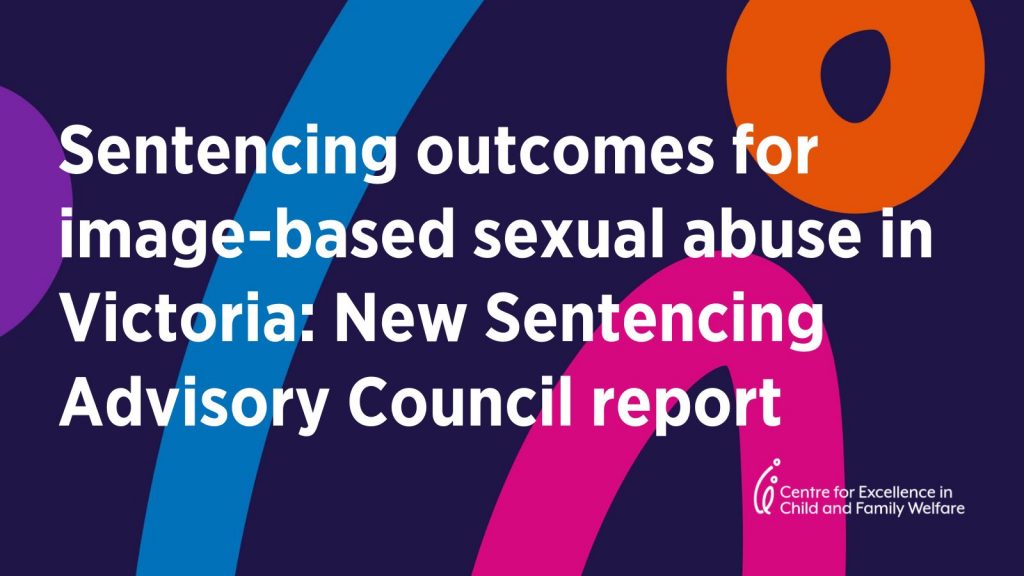Image-based sexual abuse (IBSA) involves creating, distributing and threatening to distribute nude or sexual imagery without consent. Research shows that between 10% and 23% of Australians aged 16-49 years have experienced some form of IBSA.
Most reported IBSA crimes are committed by men. Women, lesbian, gay and bisexual people, people with disability and, Aboriginal and Torres Strait Islander people are the most likely groups to be victimised. Young Australians are also more likely to be victims of IBSA than those who are older. For example, Australians aged 18–24 are approximately three times more likely than those aged 46–55 to have experienced the non-consensual distribution of images.
The motivations behind IBSA vary with according to offence. Intimate images may be captured, distributed or threatened to be distributed to advance social status through the circulation to peers, to gain power or to obtain material or concrete benefits (sextortion). While IBSA is not limited to men perpetrating against women, the harms associated with IBSA are often gendered. Harms related to the distribution of images are frequently more severe for women than men due to contradictory social standards. The threat to distribute images is also commonly used as coercive control to ensure a partner stays in the relationship.
A new report by the Sentencing Advisory Council analyses data on IBSA sentencing trends in Victoria from June 2015–June 2019 (excluding child pornography offences). During this period 2,055 cases of IBSA were recorded by Victoria police and 478 IBSA charges were sentenced. Recorded case numbers are relatively low compared to the estimated prevalence of ISBA. Low reporting rates can be attributed to factors such as individuals minimising the harm associated with their victimisation, an unwillingness to show police intimate images and a lack of knowledge regarding the criminal nature of IBSA. The report focused on four areas, the rate of sentencing, characteristics of offenders, IBSA’s association with family violence, and the types of sentencing imposed on IBSA perpetrators.
How many people were sentenced and who were they?
- 304 unique offenders sentenced for 478 IBSA offences in 306 unique cases
- Of those sentenced 91% were male
- The age group with the highest sentencing rate (35%) were aged 25-34
- Of those sentenced 8% were under 18 and 23% were aged 18-24
- 30 of the 306 offences were sentenced in the Children’s Court
- Thirty-three percent of those sentenced in the Children’s Court involved more than one charge of IBSA
How common was family violence?
Recorded IBSA offences have a significant assocation with partner and ex-partner relationships. This suggests that they are often linked to family violence, perhaps at a rate higher than previously estimated. The report found that:
- 54% of all IBSA cases were linked to family violence
- Family violence was most common in threat to distribute and distributing intimate image cases (71% and 61%, respectively) and least prevalent in upskirting cases (20%), as victims were most commonly strangers
- Cases involving individuals 25-34-years had the largest proportion of family violence flags
- Cases involving females were less likely to have a family violence flag
- Offence types co-sentenced with IBS include stalking, breach of family violence order, breach of bail conditions and sexual offences against children
- Family violence cases have an average of 6.3 charges
- 6 of the 30 Children’s Court cases involved family violence
Types of sentences imposed
- In Victoria, IBSA offences commonly receive low sentences. The maximum sentences are 2 years for distribution and 1 year for threat of distribution. This is lower than other Australian jurisdictions, excluding South Australia who maintain the same maximum sentences.
- In 75% of sentenced cases, offenders were sentenced for one IBSA offence, while 74% were sentenced alongside another non-IBSA offence
- The most common sentencing outcomes for all sentences were community correction orders
- Family violence cases were more likely to receive a prison sentence compared to non-family violence cases (29% compared to 10%, respectively)
- Thirty-seven percent of the offences sentenced in the Children’s Court resulted in youth diversion, 23% resulted in a good behaviour bond and there were no custodial sentences
Implications
The Sentencing Advisory Council identified three key implications from this data:
- As IBSA is a summary offence, law enforcement has limited power in gathering evidence such as hidden computer evidence. This can hinder efforts to secure a conviction and may contribute to variations in recorded and sentencing data
- In IBSA cases, victims often experience more harm as a result of threats to distribute compared to actual distribution. This is due to threats being used as a means of exerting coercive, and potentially long term, control. Despite this, the maximum sentence for threat offences is 1 year compared to 2 years for distribution offences. This results in low sentencing outcomes for threat offences that are frequently reported as resulting in the most harm
- Community awareness around IBSA remains low. Victims don’t always realise that IBSA is a serious offence and prefer to manage their experiences themselves. This leads to low reporting rates
It is suggested that the most useful progression to address these implications would be to increase community, perpetrator, victim and criminal justice stakeholder’s awareness of IBSA. This would increase the rates of reporting and may encourage the justice system to adjust the maximum sentences to be commensurate with the harm caused by IBSA.






